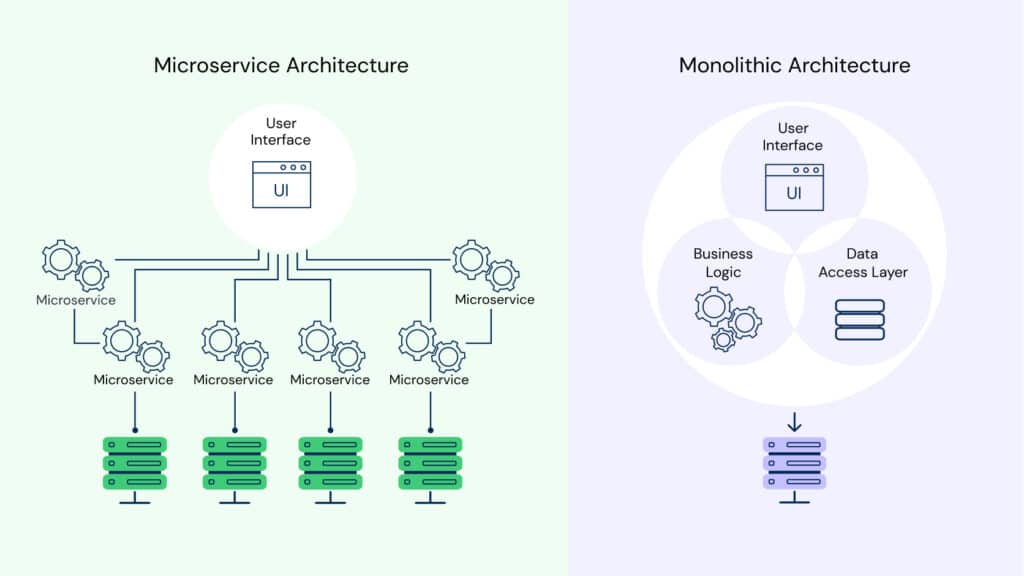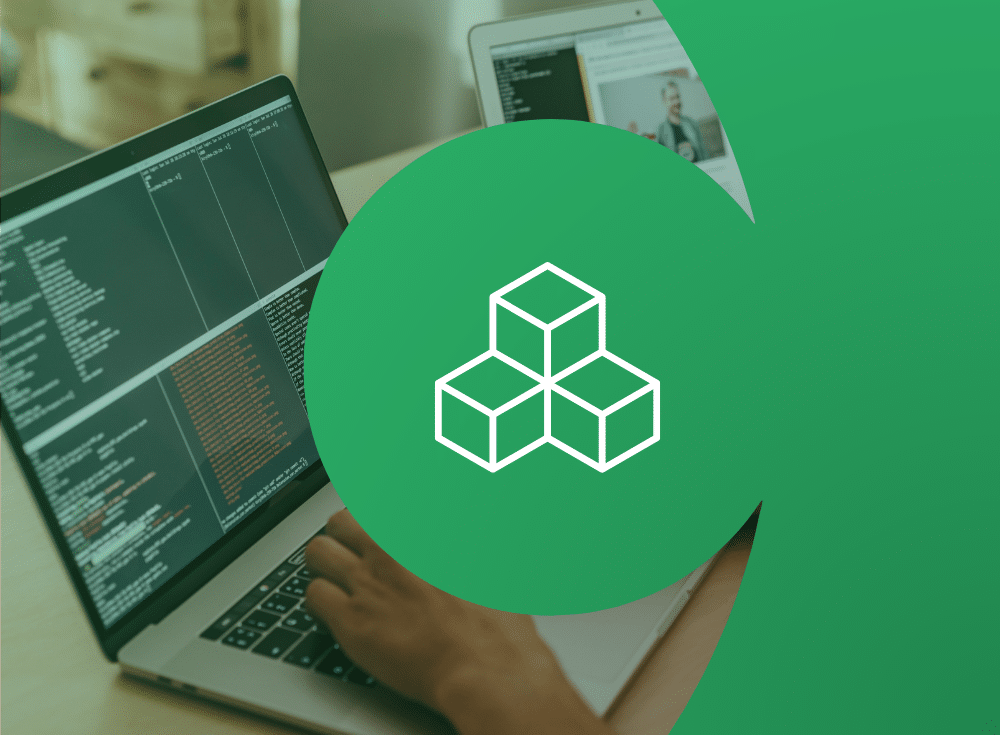TL;DR - A multi-language approach to microservices offers significant advantages
Choosing the right programming language for microservices significantly impacts development velocity, operational complexity, platform scalability, and system reliability. While Java, Python, Go, Node.js, Kotlin, and C# all offer viable paths, the “best” language depends heavily on use case, team expertise, performance requirements, and operational constraints. And it doesn’t have to stop at choosing just one language, either.
Good API design and containerization make it easy to use multiple programming languages so teams can choose the best one for each service while keeping operations consistent. Recent industry surveys confirm that polyglot microservices adoption is accelerating, particularly in cloud-native organizations seeking flexibility across teams.
We’ll go over a few of the best languages to consider for building microservices.
Choosing the best languages for managing microservices
A microservices architecture breaks down monoliths into smaller, independently deployable components, enabling teams to scale systems and iterate faster. A major advantage is the ability to choose the best language and tooling for each service — optimizing for performance, developer familiarity, or domain fit. This flexibility is especially valuable in cloud-native environments, where the speed and specialization of Kubernetes can help drive competitive advantage.
Of course, a distributed architecture introduces complexity. Testing becomes harder when services behave independently and evolve on different timelines. Communication between services, data consistency, and end-to-end tracing all require careful coordination. APIs and gateways can introduce fragility or latency, while observability becomes critical for identifying issues across a sprawling architecture.
Despite these tradeoffs, the modularity of microservices supports a polyglot approach that scales across teams. But language freedom isn’t about preference—it’s a strategic choice. Selecting the right language for each service directly shapes performance, developer velocity, and operational reliability.
Key criteria for language selection
When evaluating programming languages for a distributed architecture, several critical factors emerge that directly impact development experience, platform management, and operational success.
- Performance & Efficiency – Choose languages with low runtime overhead, fast startup, and efficient memory management to reduce latency and infrastructure cost—critical for services under high load and resource-constrained environments. Go and Rust, for instance, are praised for consistently using significantly less memory than JVM-based applications for containerized services.
- Scalability & Concurrency – Support for native concurrency primitives (e.g., goroutines, async/await) and efficient I/O handling is essential to scale horizontally and handle thousands of concurrent requests with minimal blocking.
- Development Velocity – Languages with concise syntax, strong type systems, and rich tooling enable rapid iteration and reduce production bugs through compile-time error detection.
- Ecosystem & Tooling Maturity – Mature ecosystems offer battle-tested frameworks, observability integrations, testing libraries, and deployment tools—all crucial for fast, reliable delivery of microservices.
- Containerization & Deployment – Favor languages that produce self-contained binaries or have minimal dependencies, as these streamline CI/CD pipelines, simplify container builds, and reduce deployment overhead.
Popular programming languages for microservices
The distributed systems landscape continues to be dominated by six primary languages, each offering distinct advantages for different technical scenarios and organizational contexts.
- Java maintains its position as the enterprise standard, with extensive framework ecosystems and mature production tooling.
- Go has emerged as the performance leader for cloud-native applications, offering excellent concurrency support and minimal resource footprint.
- Python provides rapid development capabilities but often requires additional considerations for performance-critical services.
- Node.js excels in I/O-intensive scenarios with its event-driven architecture and JavaScript ecosystem familiarity.
- Kotlin offers modern JVM compatibility with reduced boilerplate code and improved developer experience.
- C#/.NET provides comprehensive Microsoft ecosystem integration with strong cross-platform support and enterprise-grade capabilities.
Java for microservices
Java’s mature ecosystem of frameworks like Spring Boot and Micronaut provide robust dependency injection, auto-configuration, and production-ready features out of the box. The language’s strong typing system, platform independence, and extensive tooling enable teams to build reliable, maintainable services that scale effectively in distributed environments.
Advantages:
- Robust framework support via Spring Boot, Micronaut, and Quarkus accelerates microservice development.
- Strong typing and compile-time checks reduce runtime errors in distributed systems.
- Top-tier IDEs offer powerful code completion, refactoring, and debugging.
- Built-in enterprise observability with mature JVM monitoring, logging, and management tools.
- Optimized container images through GraalVM and modern JVMs enable faster startup and lower memory use.
Disadvantages:
- Java’s verbosity can slow initial development.
- Traditional JVM startup times may impact serverless deployments.
- Memory consumption tends to be higher than compiled languages, requiring careful resource planning in containerized environments.
- The learning curve for comprehensive framework mastery can be steep for new team members.
Go for microservices
Go’s exceptional performance characteristics, including fast startup times, lightweight goroutines for high-concurrency workloads, and static compilation, produces single-binary deployments. Single-binary deployments simplify operations, speed up image pulls while reducing storage costs, ensure consistent behavior across development, staging, and product environments and more. The language’s built-in HTTP server capabilities and comprehensive standard library enable teams to create lean, efficient services with minimal runtime dependencies and excellent operational characteristics in containerized environments.
Advantages:
- Highly efficient concurrency via goroutines supports massive scaling with low resource use
- Simple, readable syntax speeds up development and onboarding
- Minimal runtime overhead with static binaries and small container images
- Strong standard library with built-in tools for HTTP, JSON, profiling, and low-latency performance
Disadvantages:
- A smaller ecosystem compared to Java and Python limits third-party tooling.
- Verbose error handling can slow down development for some teams
- High learning curve for teams used to object-oriented paradigms
Python for microservices
Python’s rapid development cycle, extensive library ecosystem, and lightweight frameworks like FastAPI and Flask enable quick API creation with minimal boilerplate. The language’s async/await capabilities for high-concurrency workloads, seamless integration with data science libraries, and excellent Docker ecosystem support make it particularly effective for data-driven services and rapid prototyping of distributed systems.
Advantages:
- Fast development cycles thanks to Python’s simplicity and readability
- Rich ecosystem of libraries and tools for AI/ML, data processing, and scientific computing
- Modern frameworks like FastAPI offer built-in async support, validation, and auto-generated docs
- Excellent integration with testing, deployment, and container platforms
Disadvantages:
- Slower performance due to its interpreted nature and the Global Interpreter Lock (GIL)
- Poor CPU-bound concurrency, which limits true parallelism for compute-heavy tasks
- Larger container images from runtime dependencies increase deployment costs
- Dynamic typing risks more runtime errors and production issues
Node.js for microservices
Node.js excels in microservices development through its event-driven, non-blocking I/O model that handles high-concurrency scenarios efficiently, combined with JavaScript’s ubiquity that enables full-stack development teams and rapid prototyping cycles. The platform’s vast npm ecosystem, native JSON handling, and lightweight runtime make it particularly well-suited for building API-heavy services that require fast development iterations and seamless integration with modern web technologies.
Advantages:
- Efficient async model handles high concurrency well for I/O-bound services
- Unified JavaScript stack enables full-stack development and faster team velocity
- Rich npm ecosystem with mature microservice frameworks like Express, Fastify, and NestJS
- Fast startup and small footprint make Node.js ideal for lightweight containerized deployments
Disadvantages:
- Single-threaded architecture can bottleneck CPU-intensive workloads
- Memory leaks in JavaScript can be hard to trace and resolve in production
- Deep dependency trees in npm increase security risks and maintenance overhead
Manning book: Platform Engineering on Kubernetes
Learn about open source solutions and the latest best practices from the Kubernetes community.
Kotlin for microservices
Kotlin combines the robust JVM ecosystem and mature frameworks like Spring Boot with significantly reduced boilerplate code, null safety, and powerful coroutines for efficient asynchronous programming. The language’s seamless Java interoperability, expressive syntax, and built-in functional programming features enable teams to build more maintainable, concise services while leveraging the proven performance and tooling of the Java platform.
Advantages:
- Modern language on the JVM with reduced boilerplate and strong tooling support
- Null safety and concise syntaxreduce runtime errors and improve maintainability
- Coroutines enable efficient async without complex thread management
- Seamless Java interoperability allows gradual adoption within existing JVM stacks
Disadvantages:
- A smaller talent pool compared to Java can affect hiring and onboarding
- High learning curve for teams unfamiliar with functional programming concepts
- Ecosystem maturity still lags behind Java in some tooling and community support areas
C#/.NET Framework for microservices
C#/.NET excels in microservices development through its high-performance runtime, comprehensive ASP.NET Core framework with built-in dependency injection, and excellent async/await support for handling concurrent operations efficiently. The platform’s strong typing system, mature tooling ecosystem, cross-platform capabilities, and seamless containerization support enable teams to build robust, scalable services with excellent debugging and monitoring capabilities.
Advantages:
- Cross-platform with .NET Core, making C# viable beyond Windows environments
- High performance runtime with efficient GC and memory management
- ASP.NET Core supports fast API development with built-in DI and middleware tools
- Strong IDE + Azure integration supports full DevOps pipelines and enterprise tooling
- Excellent containerization and Kubernetes support for cloud-native deployments
Disadvantages:
- Licensing costs may apply for some enterprise-level Microsoft features
- Tighter ecosystem coupling can reduce flexibility compared to polyglot stacks
- Smaller community outside Microsoft ecosystems compared to open-source-first platforms
Considerations for a multi-language approach
Taking a multi-language approach to a microservices architecture optimizes performance at the service level while maintaining system consistency through standardized communication protocols like HTTP/REST, gRPC, and message queues (Kafka, RabbitMQ).
However, this flexibility introduces operational complexity—teams must maintain expertise across multiple technology stacks and standardize deployment pipelines, logging formats, and health check patterns. API contracts become critical for system integrity, with tools like OpenAPI specifications and gRPC protocol buffers ensuring consistent communication regardless of implementation language.
Challenges in language selection
Selecting programming languages for microservices presents several challenges that development and platform teams must navigate carefully.
- Team expertise and knowledge transfer concerns can create silos where specific services become dependent on individual contributors’ knowledge, potentially creating maintenance bottlenecks and increasing operational risk.
- Integration complexity increases significantly in multi-language environments where different serialization formats, error handling patterns, and communication protocols must be harmonized. Debugging distributed transactions across services implemented in different languages requires specialized tooling and cross-language expertise.
- Platform standardization versus development flexibility tensions emerge as organizations balance the benefits of language diversity against operational consistency requirements. While polyglot architectures enable optimization and team autonomy, they also increase the cognitive load on platform teams and complicate troubleshooting procedures.
- Resource management and capacity planning become more complex when different languages have varying memory usage patterns, startup characteristics, and performance profiles. Auto-scaling strategies and resource allocation must account for these differences to maintain system reliability and cost efficiency.
Best practices for languages selection in microservices
- Start with team expertise assessment—choose languages your team can realistically maintain long-term rather than optimizing purely for technical performance or trendy frameworks.
- Establish platform standards early for health checks, logging, metrics, and deployment that work consistently across chosen languages. Container-first strategies using Kubernetes provide operational consistency regardless of service implementation language.
- Focus on API design and service contracts with well-defined interfaces (OpenAPI, gRPC) that enable independent development while maintaining system integrity across different languages.
Future trends in microservices languages
The microservices language landscape continues evolving with several emerging trends shaping decisions in 2024 into 2025.
- Serverless and Function-as-a-Service adoption is driving language selection toward faster cold-start times and lower memory footprints, favoring compiled languages like Go and Rust over traditional JVM-based options for certain use cases.
- AI/ML integration requirements are increasing demand for Python and languages with strong data processing capabilities, while WebAssembly support may enable new deployment models that transcend traditional language boundaries.
- Cloud-native tooling evolution continues favoring languages with efficient resource utilization and comprehensive ecosystem support.
- Developer experience improvements in traditionally verbose languages (e.g., Java’s Project Loom, C#’s minimal APIs) are reducing the development velocity gaps between languages.
- Sustainability and energy efficiency concerns are beginning to influence language selection for large-scale deployments, with resource-efficient languages gaining consideration.
Which languages will you choose?
For enterprise applications, choose Java, Kotlin, or C#/.NET for mature ecosystems; for high-performance cloud-native services, use Go; for rapid development and smaller teams, Python and Node.js offer excellent developer experience. Start with your team’s existing expertise—successful microservices depend more on consistent architecture patterns than language choice, though the right language significantly reduces development friction and improves long-term maintainability.
Frequently Asked Questions
How do you choose a programming language for microservices?
Focus on five critical factors:
- Performance & Efficiency – Low runtime overhead, fast startup, efficient memory management
- Scalability & Concurrency – Native concurrency support (goroutines, async/await) for handling thousands of requests
- Development Velocity – Concise syntax, strong typing, rich tooling for rapid iteration
- Ecosystem Maturity – Battle-tested frameworks, observability tools, deployment support
- Containerization – Self-contained binaries or minimal dependencies for streamlined CI/CD
Should I use one or multiple languages with microservices?
Multi-language advantages: Teams can optimize each service for performance, expertise, and domain fit while maintaining consistency through standardized APIs (HTTP/REST, gRPC).
Trade-offs: Increases operational complexity, requires expertise across multiple stacks, and complicates debugging. API contracts become critical for system integrity.
Which programming languages are most recommended for microservices?
The top six languages are:
- Java – Enterprise standard, mature frameworks (Spring Boot)
- Go – Performance leader, excellent concurrency, minimal footprint
- Python – Rapid development, ideal for data-driven services (FastAPI)
- Node.js – Great for I/O-intensive, event-driven applications
- Kotlin – Modern JVM with reduced boilerplate
- C#/.NET – Strong Microsoft ecosystem, cross-platform support
What are the main challenges when using multiple languages with microservices?
Key challenges include:
- Knowledge silos – Services become dependent on individual contributors
- Integration complexity – Different serialization formats and protocols need harmonization
- Operational overhead – Managing multiple technology stacks increases platform team workload
- Resource management – Varying memory usage and performance patterns complicate scaling
- Debugging complexity – Requires specialized cross-language expertise and tooling
O’Reilly ebook: Cloud Native Observability – Practical Challenges and Solutions for Modern Architectures
Explore the challenges and solutions in a microservices architecture with the O’Reilly book on observability.





